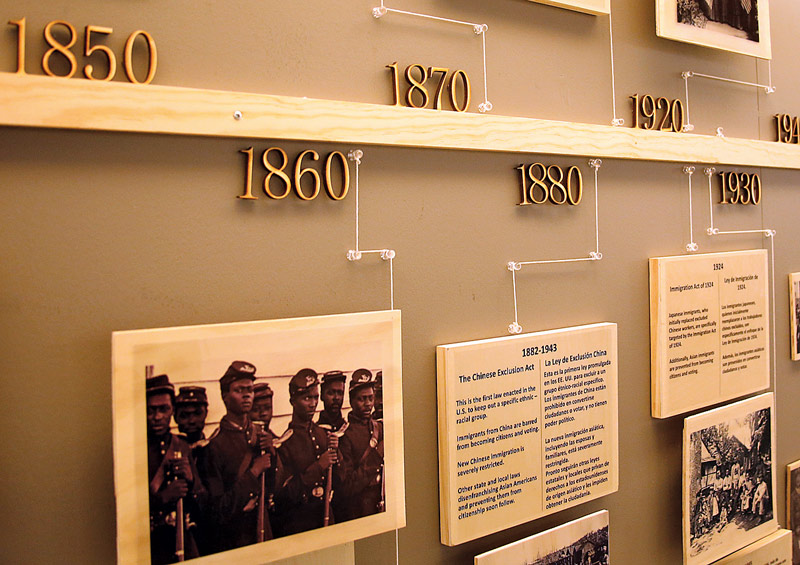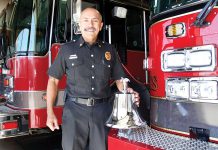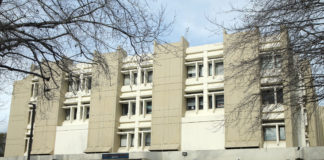
The importance of voting in America, and what gets in the public’s way from doing so, is the central topic of a newly installed exhibit at the Santa Cruz County Building, “Vote! Your Vote is Your Voice/¡Vote! Su Voto es Su Voz.”
Put on by Pajaro Valley Arts in concert with the Santa Cruz County Elections Department and the Santa Cruz County Arts Commission, the show is curated by Maria Gitin and Judy Stabile. Photographs, paintings, artifacts and a chronological timeline in photos and text are represented.
“Since the founding of this country somebody has been trying to keep somebody else from voting,” said Gitin, a civil rights veteran and speaker. “For example, when it was founded it was only white men of property (who could vote). And then as the timeline continues, they would kick somebody else out. Women, blacks. Every time they thought they were including somebody they would kick somebody out. Native Americans and on and on. And then finally women get the right to vote.”
Paramount in the exhibit is the late photographer Bob Fitch of Watsonville, to whom the show is dedicated. He is best known for his iconic images of major figures in various civil rights, peace and social justice movements in American history, including Dr. Martin Luther King Jr., Cesar Chavez and Dorothy Day. But of equal value are the photos by Fitch of everyday people involved in civil rights movements, on the streets, in classrooms and in the fields, a fact that Gitin said spearheaded “Vote! Your Vote is Your Voice.”
Gitin said she met Fitch years ago in Watsonville where they discovered they had shared memories and experiences as young civil rights workers in Alabama.
“Working directly for Dr. Martin Luther King Jr., Bob Fitch took photos of people that we both worked with, in voter registration and education in 1965,” Gitin said. “We envisioned an exhibit that would share these images and stories of the ‘ordinary heroes’ who secured the right vote in a region where their constitutional rights had been violently denied simply because they were black.”

Gitin explores how the 1960s are often portrayed as tumultuous times and one with few leaders.
“However, we met outstanding community organizers in every African American community whether large or small,” she said. “Leaders were important, but it was the nonviolent African American and Chicano activists who elevated some to become leaders and who secured voting rights for black and brown people, for people with disabilities, for all of us.”
For the exhibit, contemporary artists responded to the query: “What does the right to vote mean to me?”
“As many states jockey to limit voter registration, we are grateful to live where voting is both encouraged and accessible,” Gitin wrote. “We hope that you’ll be inspired by the courageous stands of ordinary people who risked their lives for your right to participate in the democratic process. We encourage you to engage in discussion of who is represented, who is missing and how we can ensure greater racial equity.”
The show also features Jessica Carrasco, Myra Eastman, Jane Gregorius, Hedwig Heershop, Matt Herron, Lucien Kubo, Jaime Sanchez, Sandra Takashima Shaw and Peggy Snider.
Also highlighted in the show is a book by Gitin, “This Bright Light of Ours: Stories from the Voting Rights Fight.” She will give a book talk Feb. 6 at the Downtown Branch Library, 224 Church St., at 2 p.m.
The exhibit, which wraps around the hallways of the third floor (with one painting on the first floor), runs through April 3. A reception, free to the public, will be held along with the First Friday Art Tour Feb. 7 from 5-8 p.m.
www.thisbrightlightofours.com.











